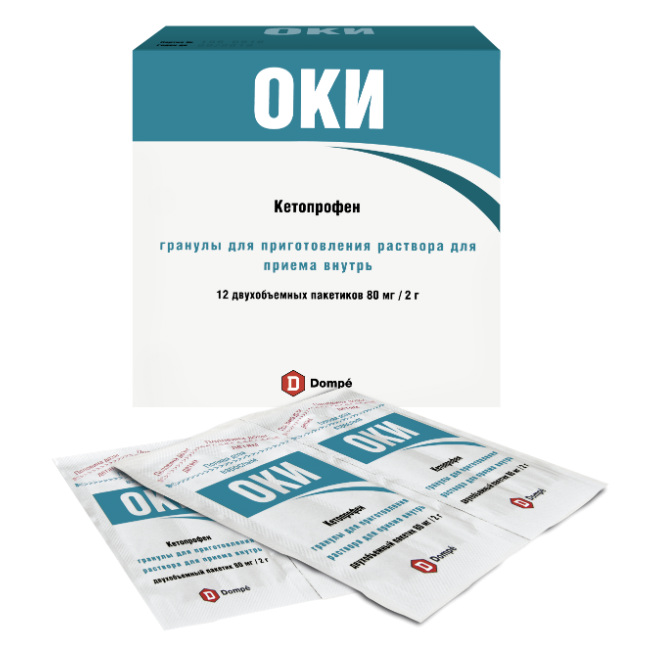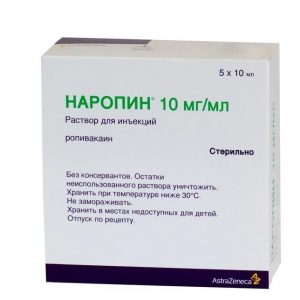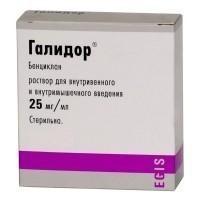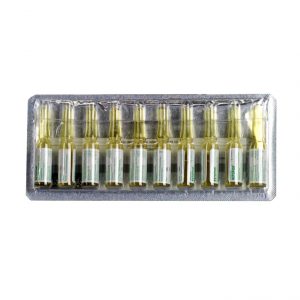Description
packaging
12 pcs
Pharmacological action
OKI – anti-inflammatory, antipyretic, analgesic.
The anti-inflammatory mechanism is associated with impaired synthesis of prostanoids (major inflammatory mediators) from arachidonic acid by blockade of cyclooxygenase type I and II. In addition, the drug inhibits the production of leukotrienes with chemotactic effects. In the spectrum of action of the drug there are also anti-bradykinin activity.
Stabilizes lysosomal membranes and delays the release of enzymes from them, which contribute to tissue destruction in chronic inflammation. Reduces the activity of cytokines, inhibits the activity of neutrophils (cytokines, especially interleukin 1 and tumor necrosis factor, released upon activation of neutrophils, play a decisive role in inflammatory tissue damage).
The analgesic effect of AKI is determined by its direct and indirect effect on pain receptors at the level of synapses and in the central nervous system.
Indirect peripheral antinociceptive effect is associated, firstly, with inhibition of GHG synthesis, increasing the sensitivity of free nerve endings to irritants (GHGs also enhance the effect of other inflammatory mediators). Secondly, an important component of the pronounced peripheral analgesic effect of OCI is its bradykinin activity (bradykinin is one of the most powerful endogenous substances that contribute to the development of pain).
OKI also has a direct effect on pain receptors, which consists in the depolarization of ion channels, due to which there is a quick effect on the pain response.
The central action of the OCI is determined by a change in the configuration of the G protein located on the postsynaptic membrane of neurons. Thus, the afferent signal of pain is reduced.
Indications
acute and chronic inflammatory diseases of the musculoskeletal system (rheumatoid arthritis, ankylosir yuschy spondylitis, osteoarthritis, articular and extra-articular rheumatism) after trauma inflammation inflammatory diseases of the urogenital system relief of pain of various genesis (pain – postoperative, premenstrual, headache, toothache and others. )
ENT and odonto-dental diseases (tonsillitis, laryngitis, pharyngitis, tonsilitis, otitis media, stomatitis, gingivitis, glossitis, aphthae, periodontitis, chronic periodontal disease),
is an adjunct in the treatment and removal of teeth.
Contraindications
Hypersensitivity.
Use during pregnancy and lactation
Like other NSAIDs, OCI should not be used in the third trimester of pregnancy.
Use of the drug in the I and II trimester should be carefully monitored by the attending physician.
Breastfeeding should be discontinued while using the drug.
Special instructions
During treatment, monitoring of the picture of peripheral blood and the functional state of the liver and kidneys is necessary.
If it is necessary to determine 17-ketosteroids, the drug should be discontinued 48 hours before the study.
Ketoprofen may mask signs of an infectious disease.
In case of impaired renal and hepatic function, dose reduction and close monitoring are necessary. The use of ketoprofen in patients with asthma can lead to an attack of bronchial asthma.
Women planning a pregnancy should refrain from taking the drug, because the chance of egg implantation may be reduced.
Influence on the ability to drive vehicles and control mechanisms.
During the period of use of the drug, one should refrain from potentially hazardous activities associated with the need for concentration and rapid psychomotor reactions.
Composition
Active ingredient: ketoprofen lysine salt 80 mg
Excipients: mannitol – 1700 mg sodium chloride – 132 mg colloidal silicon dioxide – 3 mg ammonium glycerate – 20 mg PVP – 20 mg sodium saccharin – 15 mg mint flavoring – 30 mg
Dosage and administration
Inside, with food, 3 times a day.
Adults – 80 mg (open the sachet in a full dose line).
Children 40 mg (open a sachet half-dose).
Side effects of the digestive system: abdominal pain, diarrhea, stomatitis, esophagitis, gastritis, duodenitis, erosive and ulcerative lesions of the gastrointestinal tract, hematomesis, melena, increased levels of bilirubin, increased activity of liver enzymes, hepatitis, liver failure enlargement of the liver.
From the side of the central nervous system: dizziness, hyperkinesia, tremor, vertigo, mood swings, anxiety, hallucinations, irritability, general malaise, visual impairment.
Allergic reactions: urticaria, angioedema, erythema multiforme exudative (including Stevens-Johnson syndrome), anaphylactoid reactions (swelling of the oral mucosa, pharyngeal edema, periorbital edema).
Dermatological reactions: erythematous exanthema, pruritus, maculopapular rash.
From the urinary system: painful urination, cystitis, edema, hematuria.
From the hemopoietic system: leukocytopenia, leukocytosis, lymphangitis, decreased prothrombin time, thrombocytopenia, thrombocytopenic purpura, enlarged spleen, vasculitis.
From the respiratory system: bronchospasm, dyspnea, sensation of laryngeal spasm, laryngospasm, laryngeal edema, rhinitis.
From the cardiovascular system: hypertension, hypotension, tachycardia, chest pain, syncope, peripheral edema, pallor.
Other: conjunctivitis, menstrual irregularities, increased sweating.
Local reactions with rectal administration: burning, itching, heaviness in the anorectal region, exacerbation of hemorrhoids.
Topical application (rinse): allergic reactions.
Drug Interactions
With the simultaneous use of anticoagulants, diphenylhydantoin or sulfonamides, their dosages must be reduced.
Concomitant use with acetylsalicylic acid or other NSAIDs is not recommended.
Storage conditions
At a temperature not exceeding 25 ° C.
Expiration
5 years.
active substance
Ketoprofen
Terms leave through pharmacies
In retseptu
lekarstvennaja
form for oral administration
Dumpé, Italy




